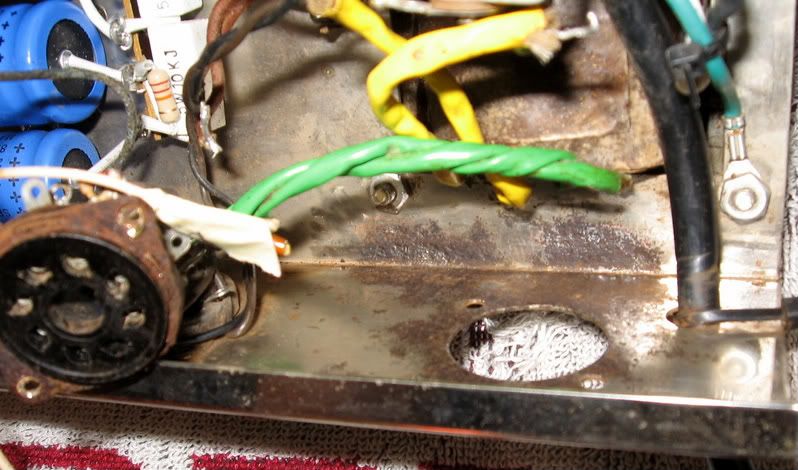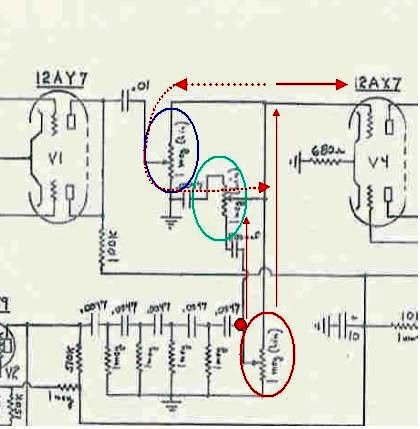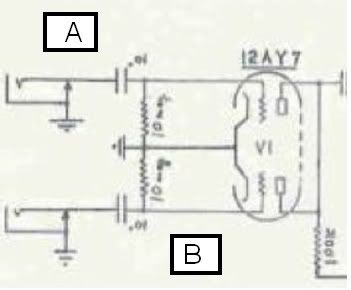John,
I thought that might be what it was, but the only original cap left in that area is the orange Astron 20mf/25vdc with the resistor piggybacked. The others have been changed with (2) 20uf/500vdc Sprague atoms and (1) 10uf/450vdc from V5 to the 10k resistor (far left on Circuit board) with the yellow wire in your picture. It seemed strange to me that whomever did the cap job wouldn't clean that up! Any harm in leaving it pooled in the bottom of the chassis with wiring stuck in it? Does it conduct?
I thought that might be what it was, but the only original cap left in that area is the orange Astron 20mf/25vdc with the resistor piggybacked. The others have been changed with (2) 20uf/500vdc Sprague atoms and (1) 10uf/450vdc from V5 to the 10k resistor (far left on Circuit board) with the yellow wire in your picture. It seemed strange to me that whomever did the cap job wouldn't clean that up! Any harm in leaving it pooled in the bottom of the chassis with wiring stuck in it? Does it conduct?





 My apologies ... I wish I had a better answer ...
My apologies ... I wish I had a better answer ... 
Comment